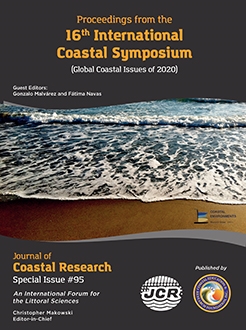Nogueira Mendes, R.; Pereira da Silva, C.; Fonseca, C., and Gil, A., 2020. Managing and Monitoring the Recreational Use of Coastal Protected Areas: the Case of Berlengas Nature Reserve (Portugal). In: Malvárez, G. and Navas, F. (eds.), Global Coastal Issues of 2020. Journal of Coastal Research, Special Issue No. 95, pp. 123–127. Coconut Creek (Florida), ISSN 0749-0208.
Coastal protected areas are under pressure due to recreational uses. That requires better and continuous information to ensure an effective and timely management, before irreversible impacts take place. This paper presents the methodology developed under project LIFE Berlengas, which allowed a better estimate of the annual number of visits of Berlengas Nature Reserve. Also took place the development of a barometer of visitors' perception and the construction of a spatial distribution model. Results show a high level of satisfaction with the recreational experience, despite concerns about the ‘excess of people'. The project's global outputs give a clear picture of the island's recreational use and problems and provide valuable information for the management of the nature reserve, namely for the determination of carrying capacity.





